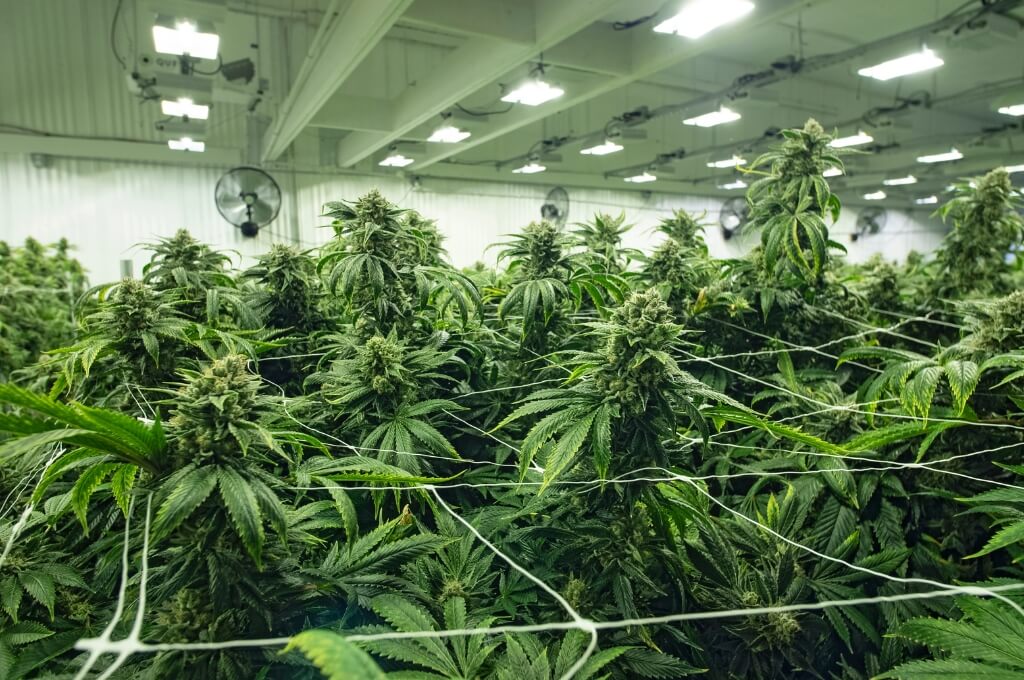Key Takeaways:
- Cannabis Indica strains are known for their relaxation effects, but individual experiences can vary based on strain and personal biochemistry.
- The notion of “pure” strains is largely a myth due to extensive cross-breeding; most strains today are hybrids.
- Continued cannabis research is vital for understanding long-term effects, debunking myths, and fostering informed consumption.
- When purchasing Indica strains, pay attention to THC/CBD content, strain name, terpene profile, production date, and lab testing information on the label.
Cannabis, with its varied properties, has three primary strains: Indica, Sativa, and Hybrid. Grasping the distinctions between these strains is crucial.
Indica originates from Central Asia, and the effects are typically relaxing. Sativa is native to warmer areas and offers cerebral, uplifting effects. Hybrid strains combine traits from both parent plants. They offer a broad spectrum of effects.
This knowledge aids consumers and medical professionals in making informed decisions based on specific needs, whether therapeutic or recreational, ensuring an optimized experience with cannabis.

Origin and Basic Characteristics of Indica
Indica, a distinct strain of the cannabis plant, traces its roots to the mountainous regions of Central Asia. This geographical origin played a pivotal role in shaping its attributes and uses.
Historically, communities in these regions have cultivated Indica for its relaxing properties and its adaptability to cooler climates, making it an integral part of their agrarian practices.
Physical Appearance
A distinguishing feature of the Indica strain is its physical stature. These plants are typically short, often giving them a compact appearance.
The leaves of the Indica plant are broad, with a darker shade of green, setting them apart from other cannabis strains. This robust and dense structure is a direct result of its adaptation to the colder environments of its native regions.
Key Differences: Indica vs. Sativa
While Indica and Sativa are both strains of marijuana, there are some very important differences between them. You get a very different high depending on the type you take, which is why hybrid strains are often so popular.
Plant Growth Patterns
When distinguishing between Indica and Sativa strains based on plant morphology, one notices marked differences:
- Indica: Characteristically shorter in stature, Indica plants tend to be bushier, showcasing their resilience to harsher climates.
- Sativa: In contrast, Cannabis Sativa plants stand tall, often with elongated stems and narrow leaves, suggesting their adaptation to sunnier, expansive environments.
Typical Growing Regions
The native regions of these cannabis plants have significantly influenced their growth patterns:
- Indica: Indigenous to the colder, mountainous terrains of Central Asia, Indica has evolved to thrive in these chillier climates, resulting in its dense and robust structure in the chemical compounds.
- Sativa: With roots in warmer equatorial regions such as Southeast Asia and Central America, Sativa plants acclimate to consistent sunlight and heat.
THC vs. CBD Ratios
The psychoactive and therapeutic compounds in these strains, namely THC (Tetrahydrocannabinol) and CBD (Cannabidiol) exhibit varied concentrations:
- Indica: Generally, Indica strains tend to have a higher THC content relative to CBD, contributing to their pronounced relaxing effects.
- Sativa: Conversely, Sativa strains often present a more balanced THC/CBD ratio, leading to both cerebral stimulation and potential therapeutic benefits.
Indica Effects on the Body and Mind
Before you take Indica, it is important to have a firm grasp of the various effects it might have on your mind and body when you take it [1].
Physical Effects
The Indica strain, distinguished by its unique biochemical profile, often manifests the following physical effects:
- Induced Relaxation: Commonly, consumers report a sense of profound relaxation, often referred to as a “body high.”
- Pain Relief: Due to its higher THC concentrations, Indica has potential therapeutic applications, especially in pain management.
Mental and Emotional Effects
Beyond its physical implications, the cannabis Indica plant also interacts with the mental and emotional facets of its users:
- Calming Influence: Predominantly, Indica exerts a calming and sedating effect, providing an avenue for mental tranquility.
- Stress and Anxiety Reduction: This strain is frequently sought for its potential to alleviate symptoms of stress and anxiety.
- Note on Individual Variability: It’s imperative to understand that the impact of Indica can vary among individuals. Factors like metabolism, tolerance, and biochemistry mean that experiences aren’t universally uniform.
Commonly Reported Side Effects
Indica and Sativa plants can interact with medications negatively, so always check with your doctor before you take it. While many laud Indica for its benefits, certain side effects have been reported:
- Drowsiness: A potential outcome, especially for new users or those consuming in larger quantities.
- Dry Mouth and Eyes: These are common side effects associated with the consumption of cannabis, including Indica strains.
Medicinal Applications of Indica Strains
There have been numerous studies on Indica strains of cannabis to see what if any, health benefits it has. There have been numerous positive results from these undertakings.
Sleep Disorders
Indica strains, with their pronounced sedative qualities, have been sought after to address sleep disorders:
- Promoting Sleep: The inherent calming effect of Indica strains may aid in inducing sleep, making it a potential natural remedy for those battling insomnia.
Pain Management
The therapeutic potential of Indica strains extends to pain relief:
- Types of Pain: Indica’s higher THC content can potentially assist with chronic pain, neuropathic pain, and pain resulting from inflammatory conditions.
Mental Health Conditions
Indica strains can play a role in mental health well-being [2]:
- Stress and Anxiety: The sedative properties of Indica strains of medical marijuana can help in reducing the symptoms of stress and anxiety.
- PTSD: With its calming effect, Indica may relieve those grappling with post-traumatic stress disorder, facilitating a semblance of emotional balance.
Other Medical Conditions
Beyond the above, Indica strains have found applicability in other health areas:
- Muscle Spasms and Tremors: Indica strains may help reduce the frequency and severity of spasms and tremors.
- Appetite Stimulation: For those struggling with appetite issues, be it from medical treatments or other conditions, an Indica cannabis strain can potentially act as an appetite stimulant.
Myths and Misconceptions
There are quite a few misconceptions about Indica and cannabis in general, and some of the myths need busting so you feel more confident in your journey.
“Pure” Indica or Sativa
The world of cannabis is rich in lore, and one prevalent myth revolves around the purity of strains. While many believe in the existence of 100% pure Indica or Sativa strains, the reality is more complex.
Due to extensive cross-breeding over the years, truly “pure” strains have become exceedingly rare. Most strains available today are hybrids to some extent, exhibiting characteristics from both parent strains.
Predictability of Effects
Another common misconception is the universal predictability of effects across individuals. While general attributes of Indica or Sativa might be described, the effects on an individual can greatly vary based on their unique biochemistry and tolerance.
It’s essential to understand that not every Indica or Sativa strain will have the same composition. The specific ratio of cannabinoids, terpenes, and other compounds plays a role in the experienced effects.
Couple this with an individual’s unique chemistry, and it’s evident that predicting precise effects becomes a nuanced affair.

Tips for Users Interested in Indica Effects
For those looking to delve into the world of Indica strains, it’s paramount to be well informed. From understanding the desired effects to ensuring safe consumption, here are some key tips tailored for a rewarding experience.
Start Slow
Treading the waters of cannabis, especially for first-time users, requires caution. First-time users should begin with a smaller dose than you think you might need.
This way, you can gauge how your body responds and adjust your consumption accordingly in subsequent sessions.
Choose the Right Strain
A crucial aspect of the cannabis journey is selecting the strain that aligns with your needs:
- Research: Delve into the specifics of the strains you’re considering. Different strains, even within the Indica category, can have varied effects.
- THC/CBD Content: Always check the THC and CBD content. These primary cannabinoids play a pivotal role in determining the nature and intensity of the experience.
Safe Consumption Practices
Ensuring safety should always be paramount:
- Avoid Mixing: Refrain from consuming Indica strains in conjunction with alcohol or other drugs. This can lead to unpredictable and potentially adverse reactions.
- Comfortable Setting: Especially if you’re new to cannabis, consume in a setting where you feel safe and relaxed, allowing you to appreciate and understand the effects fully.
Frequently Asked Questions
Is it true that all Indica strains will make me feel relaxed or sleepy?
Indica strains are typically associated with relaxation and sedative effects. While many users report feelings of calm and drowsiness, it’s not universally true for every individual or every Indica strain.
The specific effects can vary based on the strain’s chemical composition, dosage, and an individual’s unique biochemistry. It’s always recommended to start with a smaller dose to understand how a particular strain affects you.
Why is continued research in the field of cannabis important?
Continued research in the field of cannabis is paramount for several reasons. Firstly, there’s still a lot to uncover about the long-term effects of cannabis use, both medically and recreationally.
Additionally, understanding the nuanced interactions of the hundreds of compounds found in cannabis can lead to more effective and tailored therapeutic applications. Research also helps debunk myths, leading to informed and safe consumption practices for users.
What should I look for on a product label when purchasing Indica strains?
When purchasing Indica strains, it’s essential to scrutinize the product label for:
- THC and CBD Content: This gives an indication of the strain’s potency and potential effects.
- Strain Name: This can hint at the specific characteristics and lineage of the strain. Sativa plants tend to have different names.
- Terpene Profile: Terpenes influence the flavor, aroma, and potentially the effects of the strain.
- Production Date: Fresher cannabis can offer a more potent and flavorful experience.
- Lab Testing Information: This ensures the product is free from contaminants and verifies the stated cannabinoid content.
- Usage Instructions: Especially crucial for newcomers, this provides guidance on consumption methods and dosages.
Conclusion and Future Research
As our understanding of Indica strains and their multifaceted effects deepens, the importance of continued research in the cannabis realm becomes even more pronounced.
There remain vast territories of knowledge yet to be charted, especially concerning long-term effects and nuanced interactions with individual biochemistry. For enthusiasts and occasional users alike, staying abreast of the latest research is paramount.
As we anticipate further revelations from the scientific community, consumers are encouraged to prioritize safe, informed, and responsible consumption, ensuring that their journey with Indica strains remains both enlightening and enjoyable.
Sources:
-
- Burggren AC, Shirazi A, Ginder ND, London ED. Cannabis effects on brain structure, function, and cognition: considerations for medical uses of cannabis and its derivatives. American Journal of Drug and Alcohol Abuse. 2019;45(6):563-579. doi:https://doi.org/10.1080/00952990.2019.1634086
- Lowe D, Sasiadek J, Coles AS, George TP. Cannabis and mental illness: a review. European Archives of Psychiatry and Clinical Neuroscience. 2018;269(1):107-120. doi:https://doi.org/10.1007/s00406-018-0970-7


Recent Comments